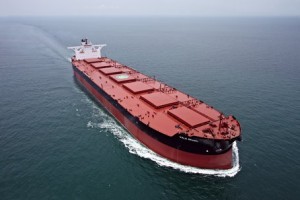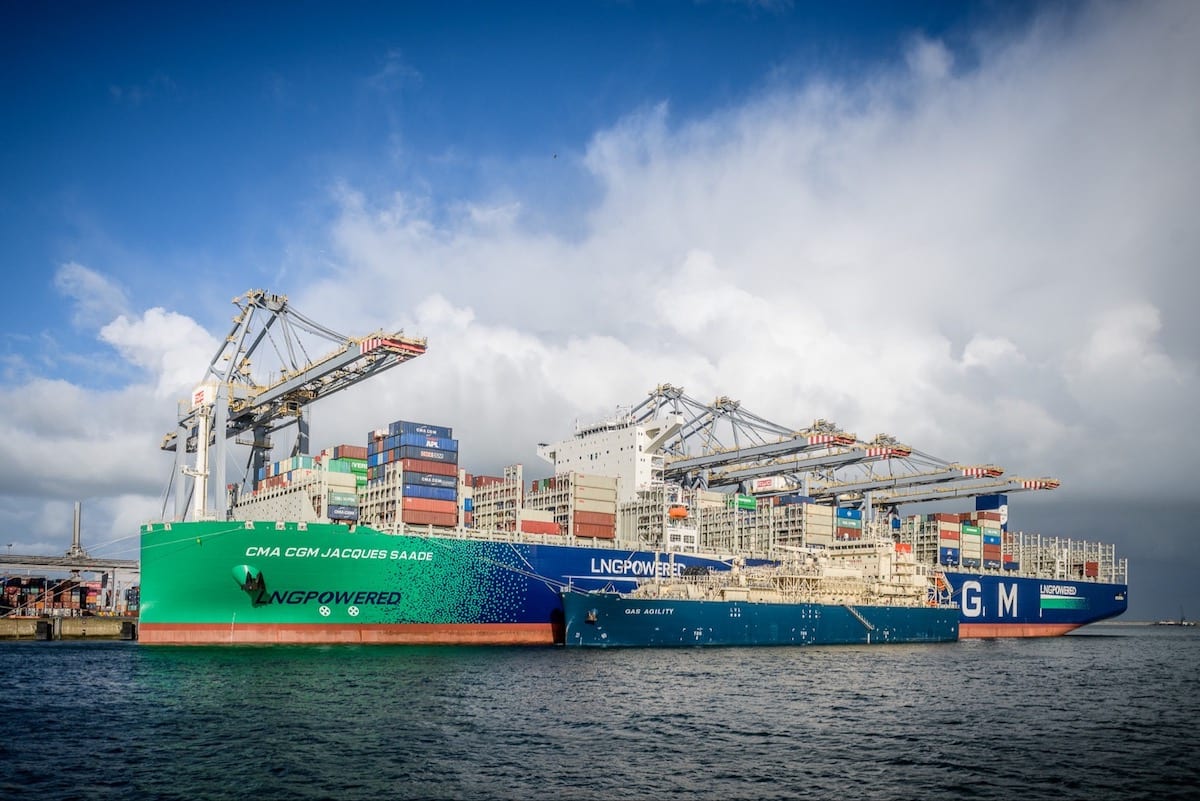Vale Brasil, Credit: Agência Vale
June 25 (Bloomberg) — The biggest jump in shipping rates since September is spurring speculation that demand from Chinese steelmakers is rebounding after stockpiles of the second-biggest seaborne cargo dropped to a five-year low.
Rates for Capesizes, the largest iron-ore carriers, doubled in 10 days, a sign to ICAP Plc and Pareto Securities AS that more cargoes are being booked. The shipments would arrive in two to three months, boosting port stockpiles that fell to about 21 days of demand in April, the lowest level since 2007. Shares of Nippon Yusen K.K. and Kawasaki Kisen Kaisha Ltd., the biggest Capesize owners, will rally as much as 17 percent in 12 months, the averages of 29 analyst estimates compiled by Bloomberg show.
While Chinese steel production expanded almost three times faster than global output last month, the advance in ore cargoes may be more about replenishing inventories than a sign the second-biggest economy is accelerating. A gauge of interbank funding in China rose the most on record last week amid a cash crunch and manufacturing is contracting. The shipments are more bullish for vessel owners, with rates now rising for a fourth month as fleet capacity expands at its slowest pace since 2002.
“Stockpile levels in China are very, very low and rising Capesize rates are the first sign that demand for iron ore is returning,” said Eirik Haavaldsen, a shipping analyst at Pareto in Oslo. “You can see how fast the market can turn around as more shipments come out of Australia and Brazil and miners take more tonnage to China.”
Third Quarter
Earnings for the 1,000-foot-long vessels will average $10,750 a day in the third quarter, the most since the last three months of 2012, according to the average of nine analyst estimates compiled by Bloomberg. Even though that’s almost double the average this quarter, rates will still be below the $16,000 owners need to break even, Pareto estimates.
Shares of Nippon Yusen, which has 126 Capesizes, advanced 29 percent to 260 yen in Tokyo this year and will reach 303.21 yen in 12 months, the average of 14 estimates show. Shares of Kawasaki Kisen gained 52 percent to 199 yen and will rise to 229.73 yen, according to the average of 15 predictions. The Tokyo-based companies also operate vessels carrying everything from cars to oil to liquefied gases.
Iron ore at China’s Tianjin port, a global benchmark, rose for six days to $120.60 a ton on June 20, the longest winning streak in six months, according to Steel Index Ltd., owned by McGraw-Hill Cos. That’s still less than last year’s average of $128.30. The commodity accounts for 75 percent of single-voyage Capesize cargoes and China buys more than the rest of the world combined, based on data from Arrow Capesize (U.K.) Ltd., a London-based shipbroker.
Domestic Prices
Chinese steel output advanced 7.3 percent to a record in May, the World Steel Association in Brussels estimates. Domestic prices for hot-rolled coil, a benchmark grade used in cars and construction, dropped 14 percent this year, data from Metal Bulletin Plc show. Stockpiles of steel reinforcement bars at Chinese ports climbed 44 percent to 7.79 million metric tons, the highest for the time of year since at least 2010, according to data from Shanghai Steelhome Information.
A Purchasing Managers’ Index for China released June 20 by HSBC Holdings Plc and Markit Economics dropped to 48.3, the lowest level since September. The World Bank cut its estimate for 2013 global growth to 2.2 percent from 2.4 percent on June 12, citing slowing expansion in the Asian nation.
Steel Mills
Iron ore prices will decline by $10 a ton and average $120 a ton during the second half of the year, according to a report from Macquarie Group Ltd. yesterday. Chinese steel mills may keep inventories at low levels or cut them further in the next several weeks, Macquarie said. A rally in iron prices will happen once iron ore and steel inventories have fallen, the bank said.
Ore stockpiles will average 20 to 25 days of supply in future, compared with an average of 30 days for the past six to seven years because of expanding global supply, according to Standard Bank Group. Stocking cycles will be less volatile as miners expand output, the bank said in a report yesterday.
Prices will decline as seaborne demand grows by 40 million tons annually for the next two to three years, half the pace of supply, analysts including Melinda Moore in London said in the report.
Record Orders
While fleet growth is slowing, owners are still contending with capacity that expanded 76 percent since 2008. Rates peaked at $218,955 that year, spurring record orders for new vessels, according to data from Clarkson Plc, the biggest shipbroker. Annual trade in iron ore advanced 40 percent to almost 1.18 billion tons over the same period.
There are too many vessels across most of the merchant fleet. The ClarkSea Index, a measure of industrywide earnings, averaged $8,684 a day in the first quarter, the lowest since 1992, according to London-based Clarkson. The gauge fell 8 percent this year.
Ship owners are now getting more bullish, with Greek companies ordering more Capesizes in the first quarter than at any time since 2008, according to Golden Destiny SA, a shipbroker in Piraeus, Greece.
Fiscal Year
Nippon Yusen will report a 75 percent gain in net income to 33.08 billion yen ($337.8 million) in its fiscal year ending in March, according to the mean of 16 analyst estimates compiled by Bloomberg. Kawasaki Kisen will say that earnings advanced 58 percent to 16.89 billion yen over the same period, the average of 18 projections show.
Some Chinese steelmakers are getting more bullish, with Hebei Iron & Steel Co., the country’s largest producer of the metal by volume, predicting higher output for the rest of the year. Iron-ore prices may rebound to as much as $140 in the second half, or 20 percent more than now, Tian Zejun, the president of the company’s international trading unit said in an interview in Vancouver on June 20.
China has 70.60 million tons of ore at its ports, the least for this time of year since 2008, according to Beijing Antaike Information Development Co., a research company. That equals about 23 days of demand, based on data from Wood Mackenzie, the Edinburgh-based commodities consultant. Reserves contracted to about 21 days of demand at the end of April, the lowest level since October 2007.
“Iron ore stockpiles have to be rebuilt,” said Rune Sand, a shipping analyst at Carnegie AS in Oslo. “Maybe we will start to see that soon with all the Capesizes that have been contracted to move iron ore to China. The worst is over.”
– Rob Sheridan, Copyright 2013 Bloomberg.
Unlock Exclusive Insights Today!
Join the gCaptain Club for curated content, insider opinions, and vibrant community discussions.

 Join The Club
Join The Club













